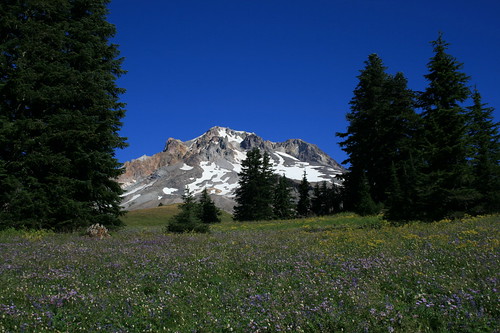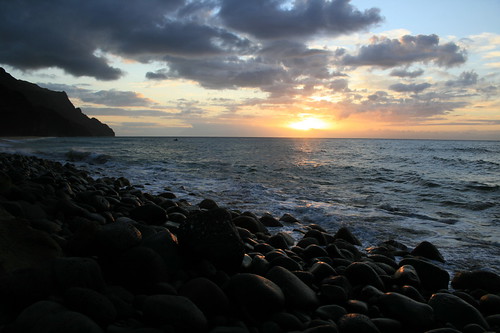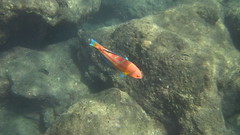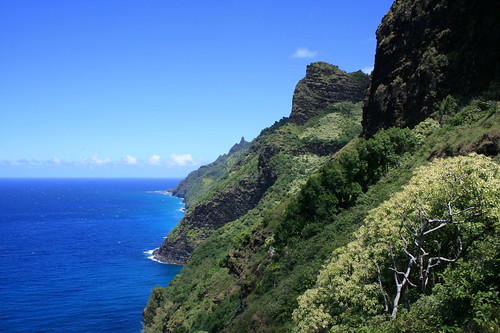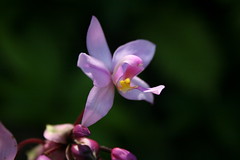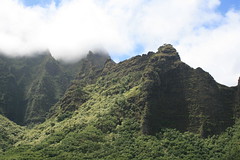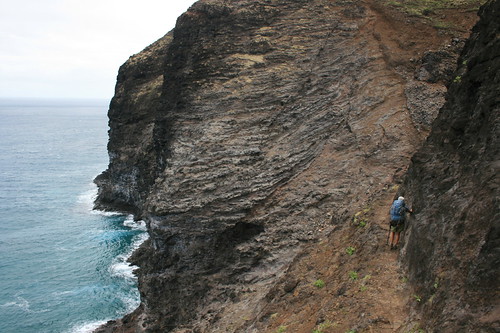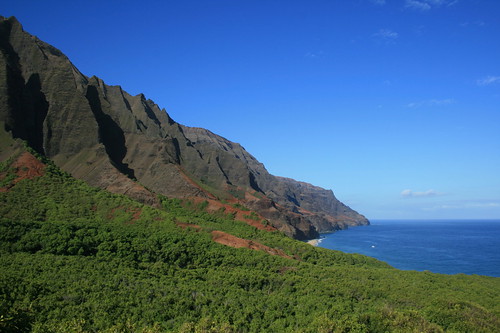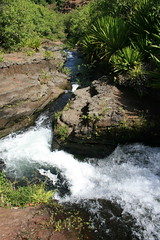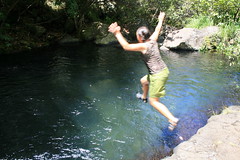
One of the biggest stories in Montana this spring and summer has been the deep snow left in the mountains from winter, and we encountered plenty on our anniversary trip to
Glacier National Park.
This year, we wanted to camp in Glacier's backcountry again and had our sights set on a three-day 19.3-mile route from the Belly River in the northeast corner of the park south through Ptarmigan Tunnel to the Many Glacier area. Unfortunately, the opening date of the tunnel through Ptarmigan Wall was pushed back beyond our trip due to lingering snow. We also just missed the last available campsite on an alternate route over Red Gap Pass.
The night before we left, we settled on a three-day 23.5-mile route from Cut Bank on the park's east side west to Triple Divide Pass, then north to Red Eagle Lake and the town of St. Mary. Campsites were still available the night before we left Missoula, but only parts of the route were described in our hiking guide and the trail report said to be prepared for snow.
The next day, we drove north to the park and made the backcountry office in Apgar our first stop. Campsites were still open, so we secured a permit. All that was left was to cross the alpine Going-to-the-Sun Road - which was under construction and had its latest-ever opening due to snow - to the St. Mary area, where we had a frontcountry campsite reserved for the night. That afternoon, we took a short hike on St. Mary Lake, then had a restaurant dinner before heading to bed. In the morning, we woke early to leave the car at our exit point and catch a shuttle south.
While rain fell most of the first day on the trail - fortunately, our shortest - we were rewarded with few clouds and a lot of sun for the longer second and third days. And while the campsites were full, we passed fewer than two dozen people on the trail the entire trip.
Day 1: Baring Creek to St. Mary Falls

After driving up to Glacier from Missoula, we took this short hike around the northwestern side of St. Mary Lake to a couple of waterfalls. The skies looked stormy, but it never rained while we were on the trail.
From the trailhead near Sunrift Gorge, we hiked down Baring Creek to Baring Falls, along the edge of the lake and up to some cliffs, then into the forest to St. Mary Falls and a couple of other cascades.

Along the way, we got our first glimpse of the park's abundant wildflowers and trailed a young deer for a short distance.
See more photos of the hike to St. Mary Falls
here.
Distance: 4.2 miles round trip.
Trailhead: Sunrift Gorge parking area, about 10.5 miles west of St. Mary on Going-to-the-Sun Road.
Day 2: Cut Bank trailhead to Atlantic Creek

The next morning, we woke early and made our way to the stop for
Glacier Park Inc.'s East Side Shuttle at the St. Mary Visitor Center. I parked at the nearby 1913 Ranger Station, where we would leave the trail, and returned for our pickup.
As we waited, we watched clouds move in and sheets of rain fall in the mountains where we would soon be backpacking. Luckily, I made an impulse purchase of pack covers a couple of days earlier that would turn out to be worth the money.
On this trip, getting to the trailhead was half the journey. The shuttle took us south from St. Mary, but would only drop us on the side of the highway five miles from the trail in the rain. We were prepared to walk up a dirt road to the trailhead, but lucked out when a couple of women who stopped to take pictures of horses in a field offered a ride instead.
The rain briefly let up at the trailhead, revealing a wildflower meadow and mountains through the clouds, but it soon set in again.
The hike roughly followed North Fork Cutbank Creek upstream in and out of the forest, and up a steep hill to the campground at Atlantic Creek. When we arrived, all that was dry was our packs and the parts of our bodies covered by rain gear - Jen had rain pants and a jacket, while I had only a jacket. (For me, the hike ranked among the top three wettest alongside the Costa Rican jungle and Olympic National Park; I wore rain pants in Scotland.)
We pitched the tent on a site with good drainage and waited out the rain inside before dinner. After eating, the clouds broke and we took a short walk to Atlantic Falls.

More photos of the hike to the Atlantic Creek camp are
here.
Distance: 4.3 miles one way.
Trailhead: 14 miles south of St. Mary on U.S. Highway 89 and five miles west on Cut Bank Creek Road.
Day 3: Atlantic Creek to Red Eagle Lake

The second day backpacking was our longest and hardest on the trail - and, thankfully, we had partly cloudy to clear skies.
The trail started fairly level, but after a short distance turned uphill at a junction. From the junction, the trail climbs steadily along the southern side of Mount James for about 2.6 miles to Triple Divide Pass.

This section of trail was some of the most interesting of the trip. As it rose out of the trees, Medicine Grizzly Lake, Razoredge Mountain and Triple Divide Peak came into view, and alpine wildflowers grew from the rocks.

This is also where we began to encounter snowfields, short at first, then long on the final stretch to the pass. A couple of these fields provided extra interest. The bottom of one had melted enough to scramble under and cool off in the dripping snowmelt. Another had pulled away from the rock wall next to the trail enough to squeeze through with a pack.

At the 7,397-foot pass, we took a break for food and pictures, and to understand the hydrologic rarity looming above:
Triple Divide Peak, above left and at the top of the post. Situated on the Continental Divide, the mountain actually sends water falling on its summit to three different North American drainages. West of the peak, water flows to the Columbia River and the Pacific Ocean. To the east, it flows to the Atlantic via the Missouri and Mississippi rivers. And to the northeast, it ultimately flows to Hudson Bay.
Only about three miles into our day at this point, we began down the Hudson Bay Creek drainage, crossing several more snow-covered switchbacks and passing a group of bighorn ewes and lambs.

Shortly out of the snow, we forded a few creeks as we continued down the valley through shrubby meadows and forest. Soon, we reached forest burned by the 2006 Red Eagle fire, with silvery snags rising into the sky.

After reaching the valley bottom, we crossed Red Eagle Creek on two suspension bridges before rounding the southeastern side of Red Eagle Lake to our campsite above the shore, about eight miles from the pass. A clear night provided for a beautiful sunset and stars.

More photos of the route over Triple Divide Pass are
here.
Distance: 11.6 miles one way.
Day 4: Red Eagle Lake to St. Mary

Our final day began by following the trail through rolling burned forestland - thick with soon-to-bloom fireweed - along Red Eagle Creek, crossing it two more times on suspension bridges.

As we moved out of the old burn, meadows thick with wildflowers opened up and stands of aspens provided shade. Red paintbrush, blue lupine, golden blanketflower, white bog orchids and pink geraniums were abundant.

Past a beaver pond, we reached our car at the 1913 Ranger Station. Then it was back across the Sun Road and its construction zones to home.
See more photos of the Red Eagle Lake Trail
here.
Distance: 7.6 miles one way.
Trailhead: 1913 Ranger Station, a short distance across Going-to-the-Sun Road from the St. Mary Visitor Center.
